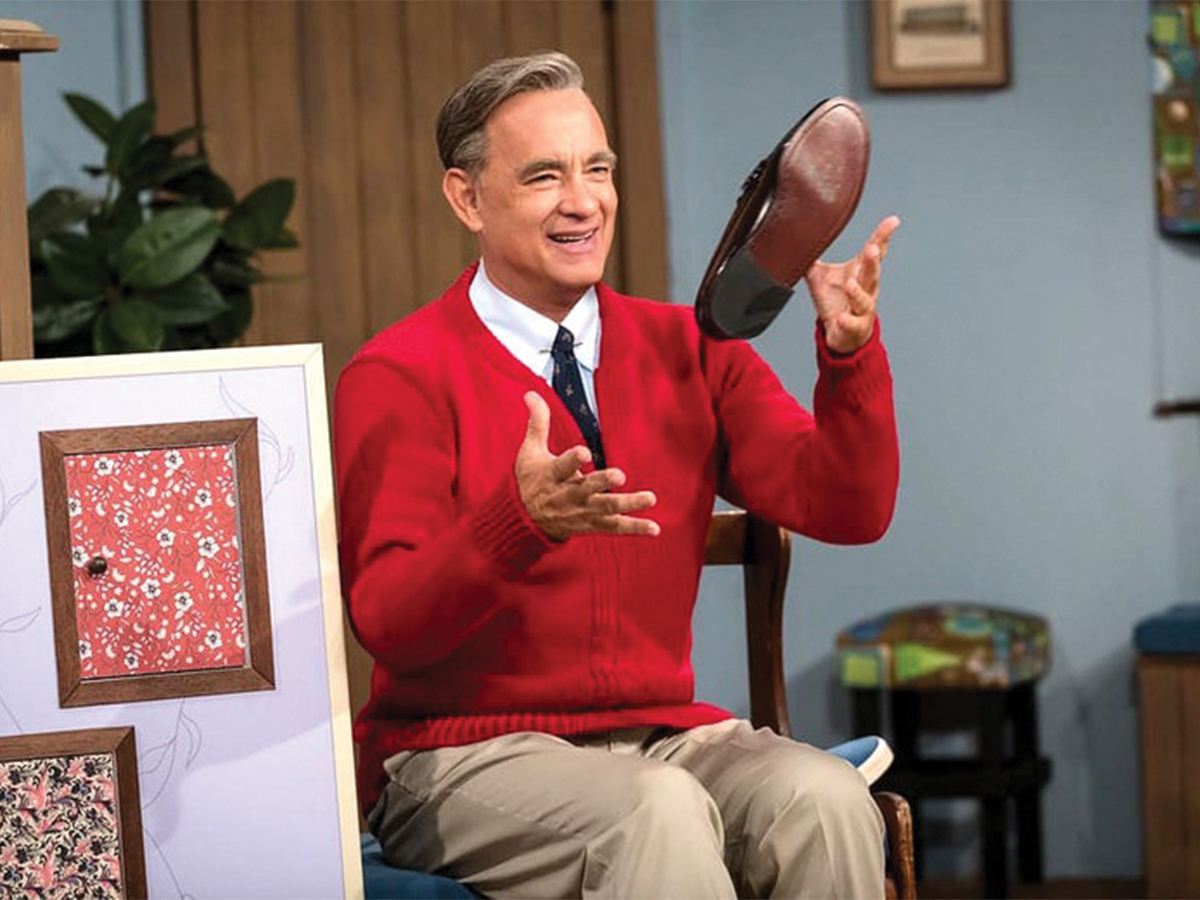
Many of us grew up under the tutelage of daytime television. Hours upon hours were spent sitting on the living room floor on a Saturday morning watching shows like “Sesame Street” or “Blue’s Clues.” One children’s television show caught the attention of both the youth and their parents — “Mr. Rogers’ Neighborhood,” which ran from 1968 to 2001. The eponymous show starred Fred Rogers, who led his young audience on a journey that covered heavy topics like disability, divorce, racism and even assassination. His impact was influential to people from all walks of life. In his new movie, Tom Hanks took on the iconic red cardigan in “A Beautiful Day in the Neighborhood.”
“A Beautiful Day in the Neighborhood” does not follow the memorable television host, instead it follows an investigative journalist named Lloyd Vogel (Matthew Rhys). Lloyd works for Esquire and is infamous for his brutally honest articles. One character remarks that Lloyd’s articles “lack humanity.” When Lloyd is assigned to interview and write a short piece on Rogers, he is frustrated (as this is not typical of his usual work), but reluctantly agrees. Much to his surprise, Mr. Rogers completely changes Lloyd’s outlook on life and helps him become a better person.
In actuality, Lloyd Vogel is a fictional character based on real-life investigative journalist Tom Junod. The film is adapted from Junod’s article “Can You Say… Hero?” The article has the same title and message as the one Lloyd eventually writes in the film. While it was originally supposed to solely be about Mr. Rogers’ impact on American youth, it instead shed light on Junod himself. A simple, mere 400 character article turned into a lengthy, analytical piece on Mr. Rogers. The film is a pure reflection of the article’s material, a rare example of film replicating reality (despite a few changes, of course). Don’t walk into “A Beautiful Day in the Neighborhood” expecting a biography of sorts; it is a thoughtful reminder of what it is like to be a kind human being.
“A Beautiful Day in the Neighborhood” begins just like a normal episode on “Mr. Roger’s Neighborhood.” Mr. Rogers comes in, singing his usual song while he changes shoes and pulls on his red cardigan. He then introduces Lloyd just as he would introduce a problem or topic on the show. Rather than using footage of actual skylines or neighborhoods, the film opts for miniature buildings — typical of a normal episode of “Mr. Roger’s Neighborhood.” This approach to mechanize the format of the television show in the film is both a nostalgic and creative way to tie in Mr. Rogers and the actual topic matter together. Lloyd’s story is just another episode on “Mr. Roger’s Neighborhood” that we can learn from. Just as the show covered difficult issues for children to learn, the film does the same by incorporating Lloyd’s story in the show. I thought this film would be somewhat of a straightforward biography of Mr. Rogers. Instead, it shows how Mr. Rogers impacted the lives of average, everyday people.
Hanks captures the essence of Rogers perfectly. It’s fitting to have a beloved movie star play an equally loved television host. Hanks is able to capture the mannerisms and small details of Mr. Rogers causing you to almost believe it really is him in the flesh. Vogel’s inner rage and turmoil is ever-so present in Rhys’ performance. Their characters are complete foils of each other: Mr. Rogers being a caring, slow-talking icon to Vogel being a demanding, fast-paced journalist. Despite this, they play very well off of each other as it became evident that Mr. Rogers was just the person Vogel needed to open up to.
The film also introduces Lloyd as a man with problems and nothing more in terms of character. There isn’t much background from him. What the audience generally learns is from the remarks of other characters. Despite this being a bit of a setback, it is reflective of an average guest on “Mr. Rogers’ Neighborhood”: a person that we do not know much about that has a problem of sorts.
Despite the enthralling performances both Hanks and Rhys bring to the table, “A Beautiful Day in the Neighborhood,” is a rather slow paced film. Those that know Mr. Rogers will be patient enough to get through it; those that don’t will find it rather boring. However, it’s important to remember that the film’s message of dealing with anger and forgiveness is rather simple, serving to be applicable to all people. “A Beautiful Day in the Neighborhood” is no blockbuster, but a movie that requires thought and patience.
“A Beautiful Day in the Neighborhood” is an ernest, emotional picture of internalized rage and brokenness. Treated like an episode of “Mr. Rogers’ Neighborhood,” the film takes on a simple, childlike message of dealing with anger through the guidance of Mr. Rogers. The film features a talented cast that help deliver an honest, nostalgic message.
VERDICT: “A Beautiful Day in the Neighborhood” is an emotional, thoughtful film, not necessarily about Mr. Rogers, but about dealing with inner anger and loss. Paired with the spirit and talent of Tom Hanks and Mr. Rogers, audiences will be inspired to take some insight into their own lives.







